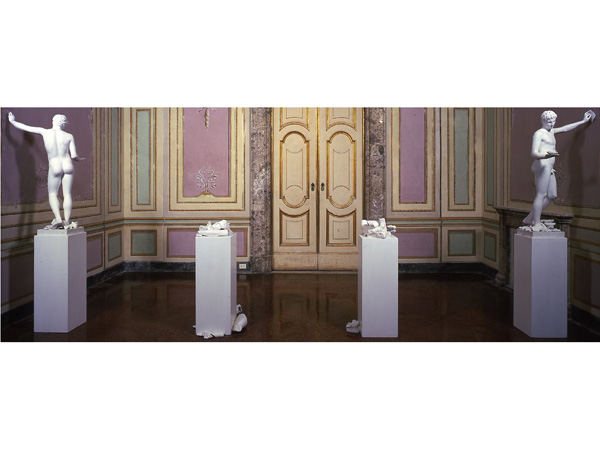Genova, 1940
Giulio Paolini

Paolini was a painter and sculptor who dedicated himself to an oeuvre based on conceptual enquiry. After spending his childhood in Bergamo, he moved in 1952 to Turin, where his interest in art burgeoned from an early age. In 1960, he produced his debut piece, Geometrical drawing, the squaring in ink of a canvas painted with white tempera. He presented his first solo show in ’64 in Rome’s Galleria La Salita. From ’67 to ’72, at the invitation of critic Germano Celant, he contributed to a series of exhibitions on Arte Povera, thus associating himself with that movement. In 1970, he entered the Venice Biennale with the work Elegy,which marked his first use of a plaster cast of a classical subject: the eye of Michelangelo’s David with a fragment of mirror applied to the pupil. During this period, Paolini explored the dimension of “perspective” and the theme of the “double” and the “copy”. This emerged, in particular, in the group of works entitled Mimesis, comprising two plaster casts of an ancient statue, one in front of the other, calling into question the very concept of reproduction and representation. This was also the artist’s theme in his 1986 work displayed in Caserta, L’altra figura (the other figure): two plaster copies of the Marathon Boy, leaning against the walls in a mirror image of each other, holding a few fragments of themselves.






